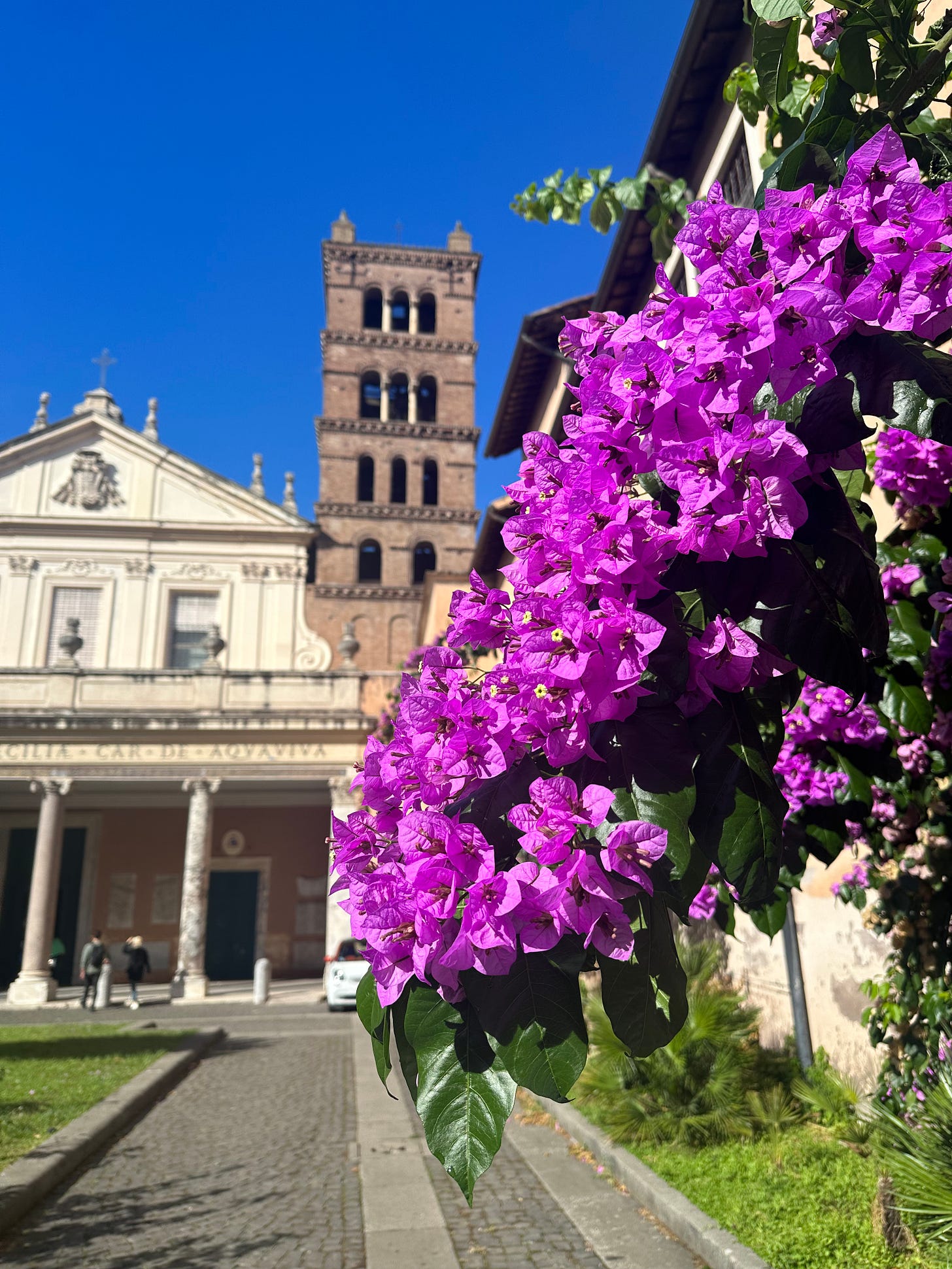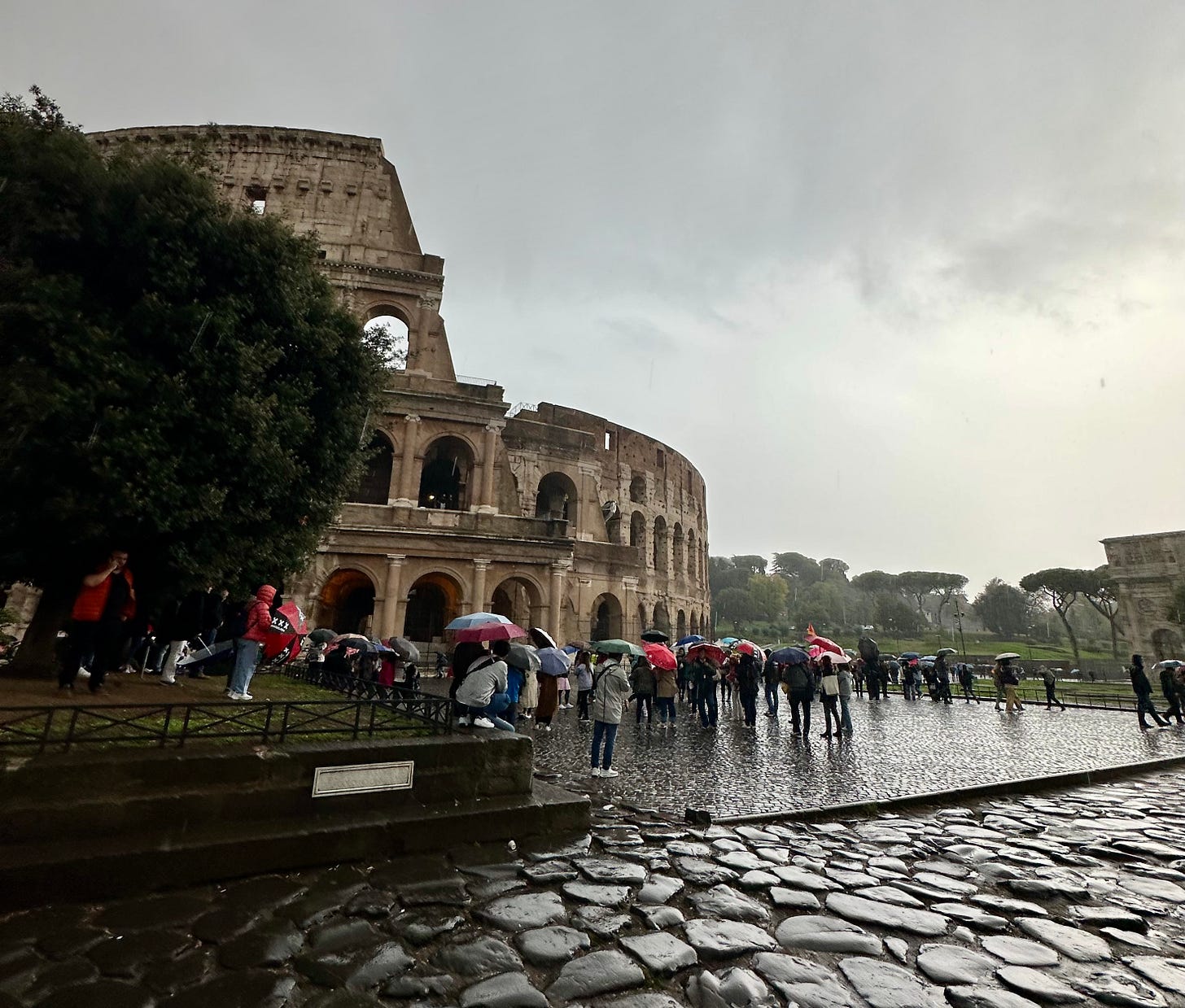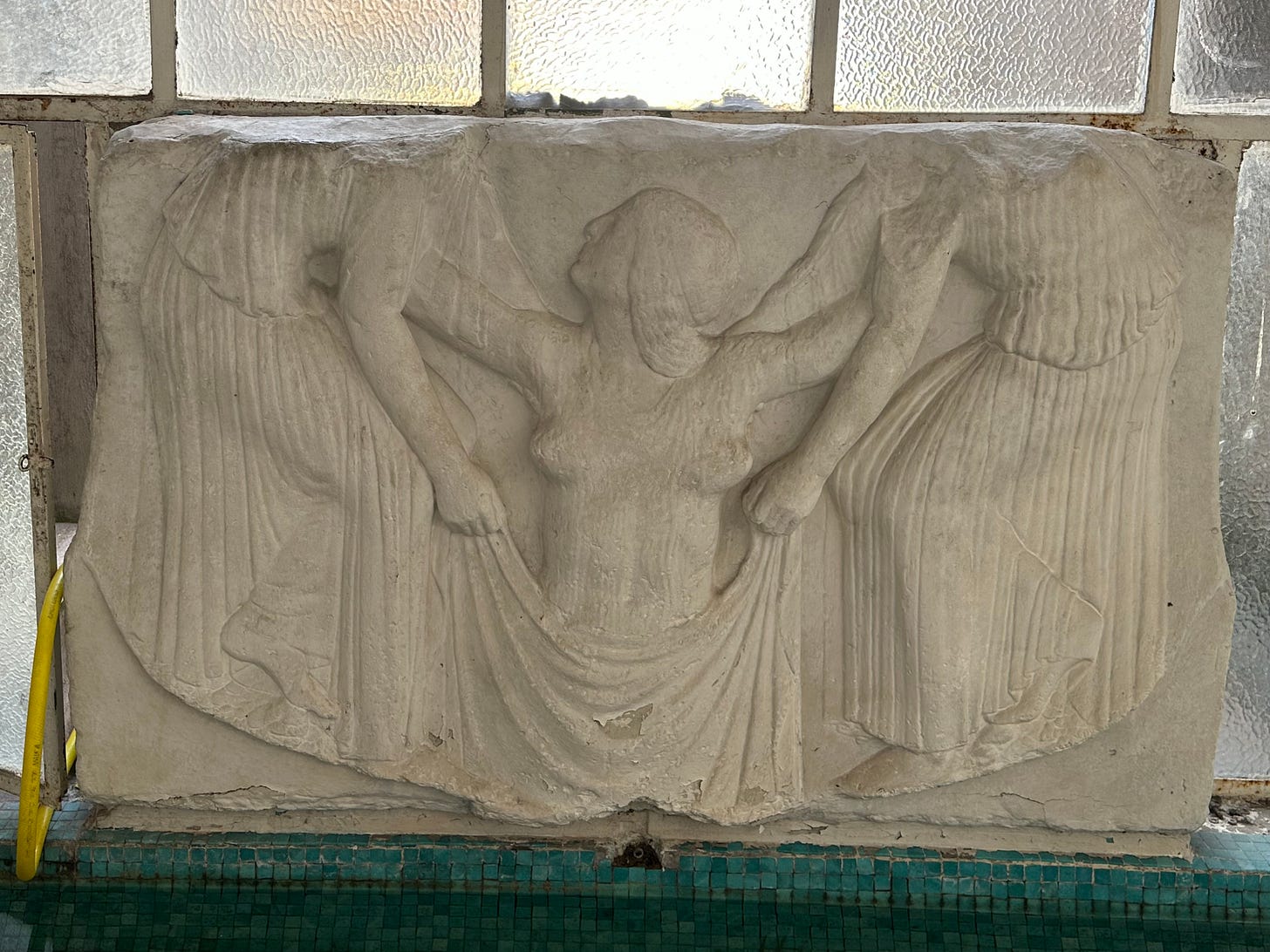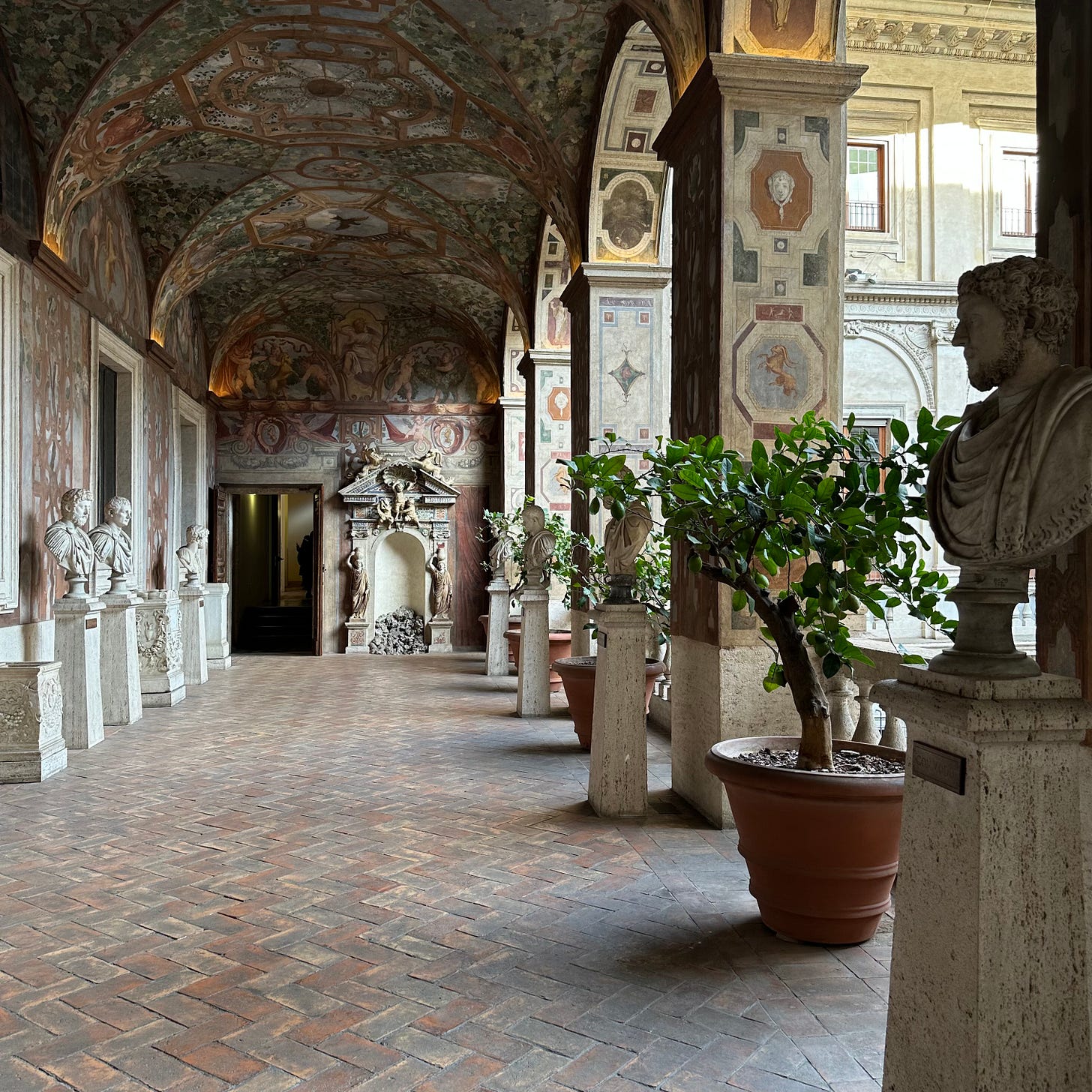November is upon us. It is Rome’s wettest month. The days are short, and the traffic angry as it lurches over cobbles glittering with the reflections of a thousand headlights on dark afternoons. But then the rain abates, the sky is blue and everything seems eminently possible once again.
November is also the month when I deal with bits of admin which have been lurking at the back of my mind throughout the hot and hectic summer months. And so yesterday morning I scootered across town to meet my—very nice, very calm—accountant. His office is in a Fascist era building near Piazza Bologna with the sort of smart Roman lobby I adore: all crisp marble and mosaic. The portineria bears a Latin inscription which applies a nautical metaphor for existential rest:
Inveni portum, spes et fortuna valete
I have at last found my harbour, farewell Hope and Fortune!
The quotation—variants of which are cited on ancient tombstones, and by Robert Burton in his Anatomy of Melancholy, Thomas More, Casanova and Byron—is part of the Latinisation of a Greek epigram found in the Palatine Anthology, the tenth century Byzantine compilation of a vast swathe of of over a millennium of Greek writings.
Below the inscription in the lobby is a copy of the Ludovisi Throne. The original is found at Palazzo Altemps, a glorious museum of ancient sculpture in a late Renaissance palace. It is a lazy stone’s throw from Piazza Navona and one can almost always have it to oneself at any time of year, I highly recommend a visit. The Ludovisi Throne is a fifth century BCE bas relief, and indeed not a throne at all. It (probably) depicts Aphrodite raised from the sea by the Hours and has been linked to a temple near Locri, in Calabria, once part of the Magna Grecia.
The relief was found in the gardens of the Villa Ludovisi in 1887, once the site of the ancient gardens of Sallust. If we are of a whimiscal bent (and I very much am) we can imagine the seventeenth century Ludovisi pope, Gregory XV, unwittingly wandering his gardens as Aphrodite languished below him in the mud.
In 1894 the economic straits of the papal family saw the Ludovisi collection sold to the Italian State. Post-Risorgimento property speculation led to the development of the via Veneto and environs, where their suburban pleasure gardens had once been, and the relief found its way to the National Roman Museum at Palazzo Altemps.
Fast-forward to a damp November towards the end of the first quarter of the twenty-first century, where a copy sits accompanied, with glorious bathos, by a yellow hose in the lobby of my accountant’s building. Above is the Latinised inscription of a phrase from the Palatine anthology, part of the library of Heidelberg given by Maximilian I of Bavaria to the short-lived Ludovisi pope, Gregory XV. Connexions make themselves apparent in the least likely settings.
These are all thoughts that flit through my mind as I leave the lobby and bid farewell to Aphrodite reassured by the calm competence of the harbour of a good commercialista that I, too, no longer need rely on Hope and Fortune. Valete, indeed.









Wow, talk about connections! Here is how my last hour was spent in the depths of the internet:
Wake up to texts and photos from my daughter who took a German day trip today. She works for the NFL and is spending two weeks in Frankfurt for the two American football games there. She has a couple of free days and I encouraged her to take an easy day trip, one suggestion was Heidelberg which she chose, the photos she sent are beautiful.
Next, I check email and find your latest posting on Substack…. Of course, another interesting read, and then the mention of Heidelberg! Wow!
But all this reminded me that my knowledge of Germany and of German and HRE history, and in general 17th-19th century European history is sadly lacking. (I had to Google the Palatinate, embarrassed to say) Next spring, after Italy, I plan to venture into southern Germany for the first time since a day trip in 1984. I better read up!
So off I went, in my armchair, researching the library of Heidelberg, the Palatinate anthology, and the 16th century journey of the manuscripts to the Vatican. Here’s one website telling the story:
https://digi.ub.uni-heidelberg.de/en/bpd/bibliotheca_palatina/geschichte.html
Fascinating!
Then I wanted to better understand the Palatinate and found this article and a connection to the U.S.
https://www.nps.gov/articles/000/the-palatine-germans.htm
Amidst the sad story of the 18th century Palatinate refugees, is another stretch of a connection for me; the part about Queen Anne being kind to them but with a motive. I just last night began watching a lecture series on the Tudor and Stuart eras (a Great Courses series free with Amazon Prime). I’m very familiar with pre-Tudors and Tudor history but sorely lacking beyond that. And the introductory lecture indicates that he will cover the period up to the death of Queen Anne, who I know nothing about. Excited to continue watching this engaging professor, he’s almost as engaging as you, Agnes! It’s called History of England from the Tudors to the Stuarts.
Speaking of the sad story of the 18th c. Palatinate people, is it me or does it conjure extremely uncomfortable feelings of current world events???
Oh gosh, I must stop 😢
In the end, I’m really glad you don’t have to rely on Hope and Fortune as it seems to fail us throughout the millennia!
Loved seeing the photo of Santa Cecilia in Trastevere... my patron saint. The statute of her on the altar there is stunning. Can’t wait till my next visit. Thanks for the tip on Palazzo Altemps!